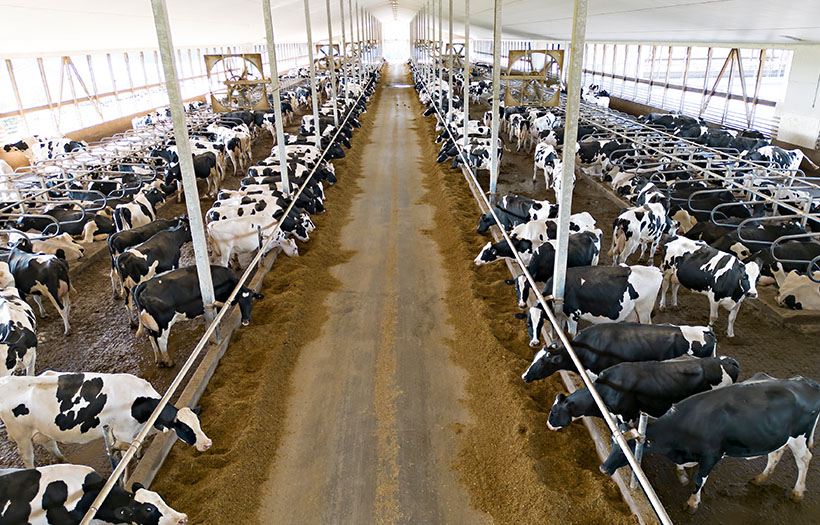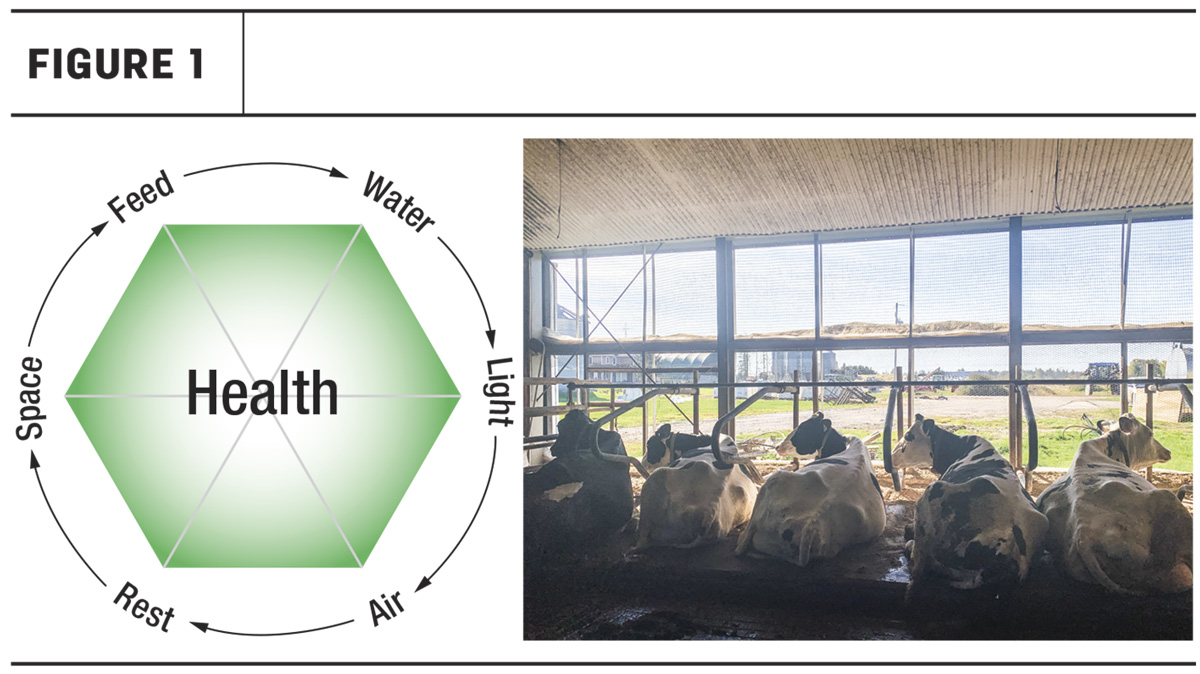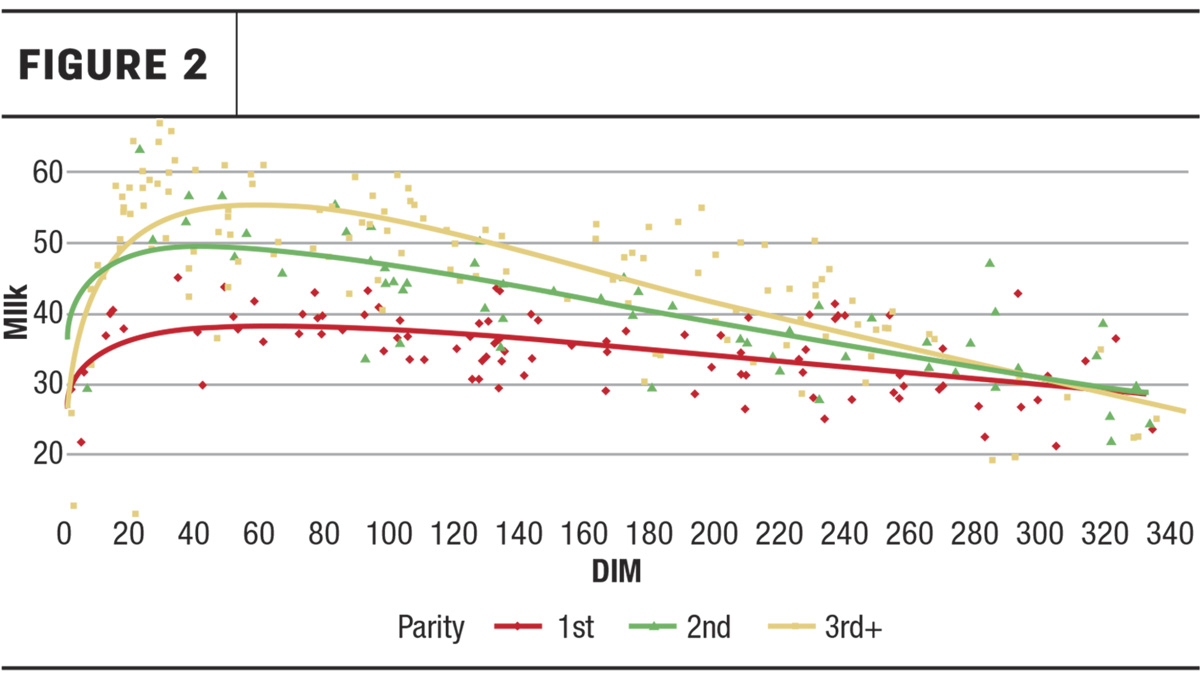Tested and True: Five Strategies that Improved Herd Performance in 2022

Strategizing to improve herd performance has a direct impact on financial returns. Improving herd performance may include a focus on reproduction, cow comfort, data analysis, ration optimization and, often, thinking outside the box. Sharing success stories is how we advance and strive for superior performance as an industry – thank you to the farms that contributed to this article.
Evolving reproductive strategies as production rises What is a potential negative consequence of a 3% increase in peak milk over a four-month period and an increase in average milk yield of 1.5 kilograms per cow? The answer is: a 10% increase in cystic cows and a declining pregnancy rate. This challenge drove Ferme Troistrèfles from Embrun, Ontario, to discuss energy balance and diet costs with their nutritionist and reproductive protocols with their veterinarian.
The team at Ferme Troistrèfles recognized that maintaining days in milk (DIM) below 165 days and a good distribution of DIM is key to a consistent milk production year-round.
- Following the increase in milk yield, decisions were made to increase synchronization at first service by an additional 40% on the two-plus lactation groups having the highest milk production, whereas previously, synchronization protocols were only conducted on problem cows.
- In order to economically solve the new energy balance challenge that followed the increase in production, the energy and starch content of feed delivered via the feeder in the robotic milker was increased for the fresh, peaking and first-lactation cows, leading to an additional 2% peak milk and a 3% improvement in pregnancy rate over two months.
Strategy 1
Meet with both your veterinarian and your nutritionist to discuss overall herd performance. Cow comfort to top milk production Maximizing cow comfort is not only the right thing to do, but it also has a positive return on investment (ROI).
Analyzing, finding and implementing changes to eliminate bottlenecks around the six freedoms of the Cow Signals Diamond – air, water, light, rest, space and feed – will improve herd performance. At Ferme Tranquillity in Lachute, Quebec, adjusting stall dimensions and changing deep-bedding stalls for new mattresses led to increased cow lying time (Figure 1 on page 15) and resulted in 1 kilogram of additional energy-corrected milk (ECM).

Cows should be resting a minimum of nine hours per day, and for every additional hour from nine to 14 hours of rest, cows will produce an extra kilogram of milk.
- Deep-bedded stalls are generally favoured over mattresses; however, mattresses allowed Ferme Tranquillity to lengthen the stalls and, along with neck rail adjustments, led to an increase in lunging space, encouraging more cows to lie down and therefore improve cow comfort.
- Reducing bedding costs, eliminating labour of deep-bedded stalls and consequently increasing milk production allowed Ferme Tranquillity to pay for their investment in mattresses in one year. An ROI well worth it.
Strategy 2
What is your Cow Signals Diamond bottleneck, and what are your plans to improve it?
Data analytics to pinpoint opportunities
Top herds invest in management software to achieve superior performance; how they turn the infinite amount of data into actions is key to success. Benchmarking is an efficient way to pinpoint limiting key performance indicators (KPI) in your herd.
This is how Ferme Beauchemin & Fils in St-Ours, Quebec, identified that peak milk and persistency of the first-lactation group could improve when compared to mature cows, despite being in the top 20th percentile for milk production, as shown by Dairy Enteligen Insights Canada Benchmarking.
Were the first-lactation or the mature cows in the top 20th percentile?
- Ferme Beauchemin & Fils decided to work on narrowing age at first calving via improved reproduction and investments in their heifer ration to attain genetic potential of first calvers.
- Now their first-lactation peak milk is 38 kilograms, a 17% improvement over the last two years (Figure 2).
- It is important to ensure the stature of heifers at calving is ideal by measuring height and weight periodically. Validating that the standard deviation around age at first calving is narrow (plus or minus 1.5 months) can lead to superior peak milk performance.

Strategy 3
Utilize all facets of data analysis available to you through your herd management software. Optimizing the dairy ration There are many factors involved in optimizing a dairy ration; however, physical characteristics (ex. particle score and chop length) are critical to dry matter intake (DMI) and often overlooked.
Commonly, ration balancing software is limited to the chemical analysis of feedstuffs analyzed at the lab. Physical characteristics greatly impact digestibility and therefore a cow’s ability to turn feed into milk. Particle score is the percentage of particles going through a 1.65-millimetre sieve – the greater the score, the more digestible the grain.
When Godrie Farms in Dunnville, Ontario, replaced their roller mill with a hammer mill, they were able to move their particle score from 30 to 80 on the corn they were feeding. This change resulted in a gain of more than 2.5 kilograms of milk while maintaining components.
Not only did this investment on-farm result in improved herd performance, but it also had further economic benefits due to the current grain market.
Strategy 4
Take the time to ensure your nutritionist is evaluating particle score and chop length in their nutrition program to ensure top performance of your herd. Thinking outside the box Innovation is key to success in the dairy industry.
Davenport Family Dairy in Owen Sound, Ontario, thinks outside the box when it comes to their youngstock. Having faced pre-weaning calf health challenges, added solids and a coccidiostat had been used in whole milk successfully to keep outbreaks at bay.
However, when a natural alternative became available to complement their whole milk, the opportunity to decrease antibiotic usage on-farm and improve calf growth was seized. Implementing a whole milk supplement with minerals, vitamins and natural plant extracts decreased calf treatments by 45%, enabled calves to recover more quickly in the case of infections and yielded calves that are bigger at weaning.
Strategy 5
Thinking outside the box can be nerve-wracking, however, can be key to unlocking the next level of performance. You never know what you might uncover.
Dairy producers’ resilience, ability to adapt to change, strive for improvement and outside-the-box thinking makes them outstanding entrepreneurs. Sharing strategies and best practices among peers has enabled individuals and the industry as a whole to push for superior performance in 2022 and beyond.
